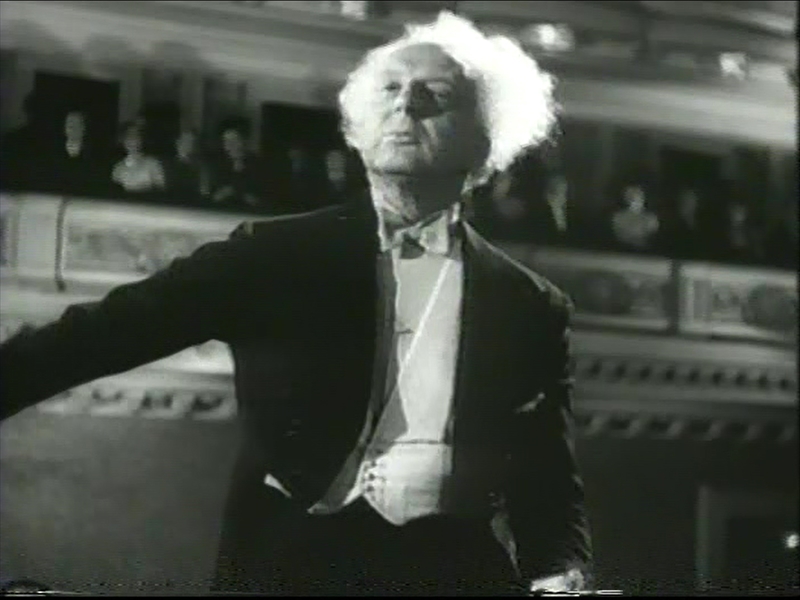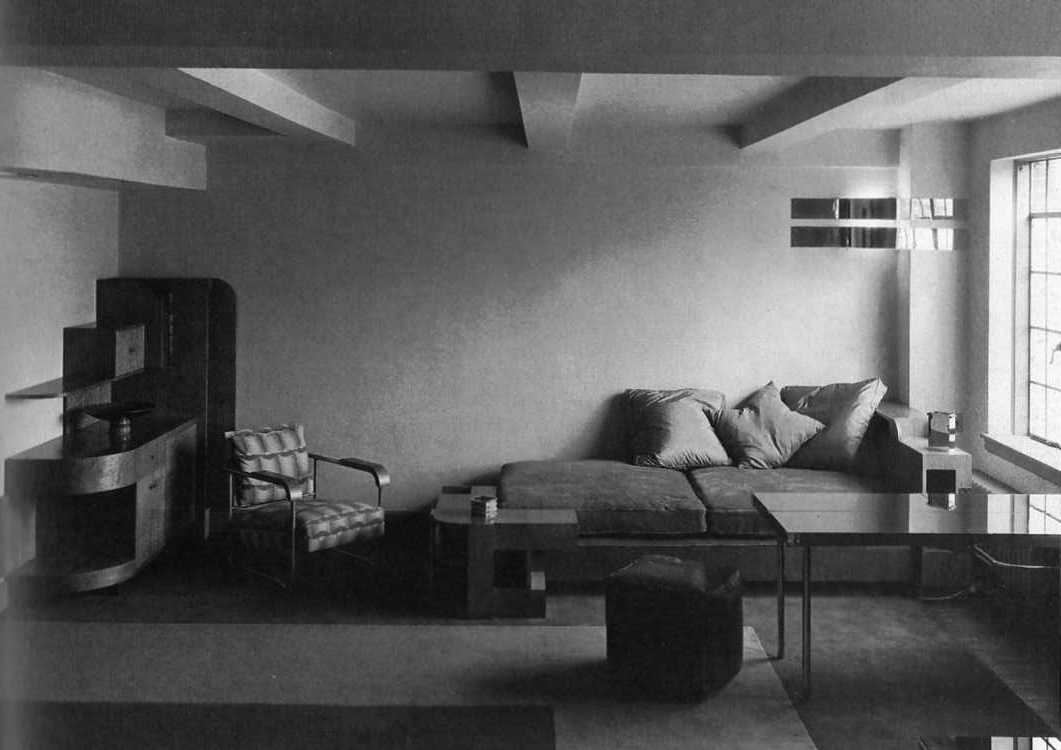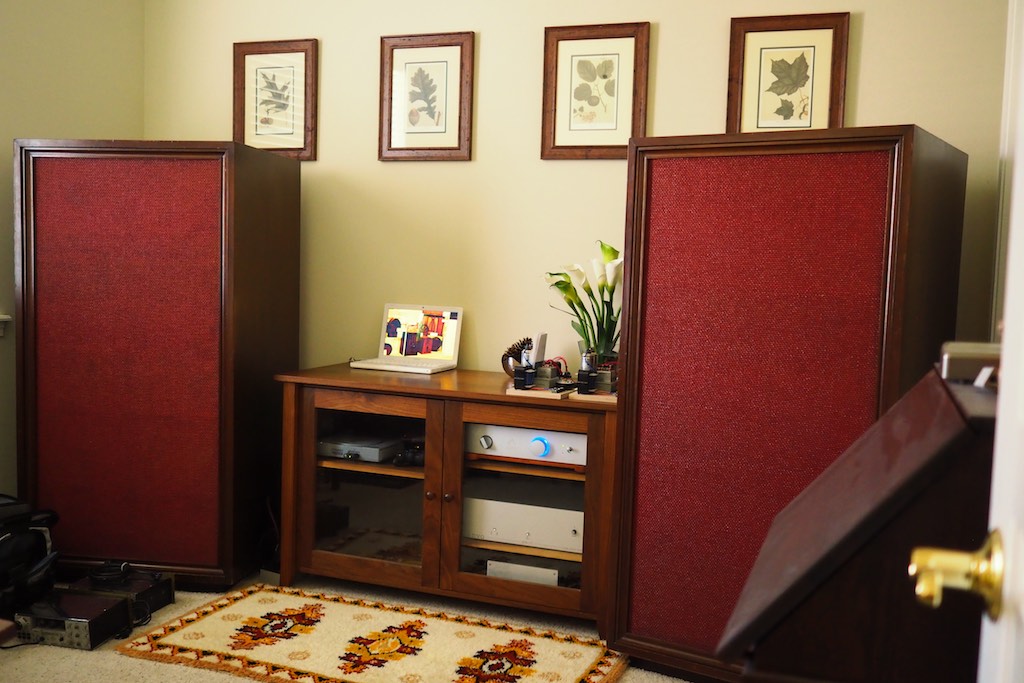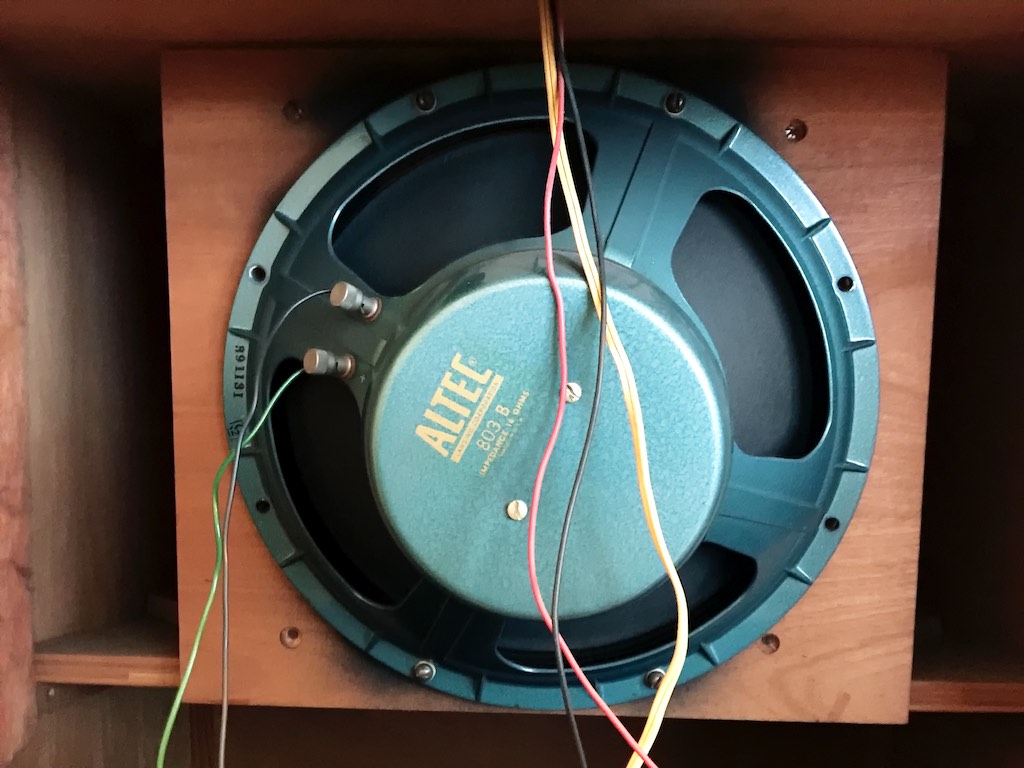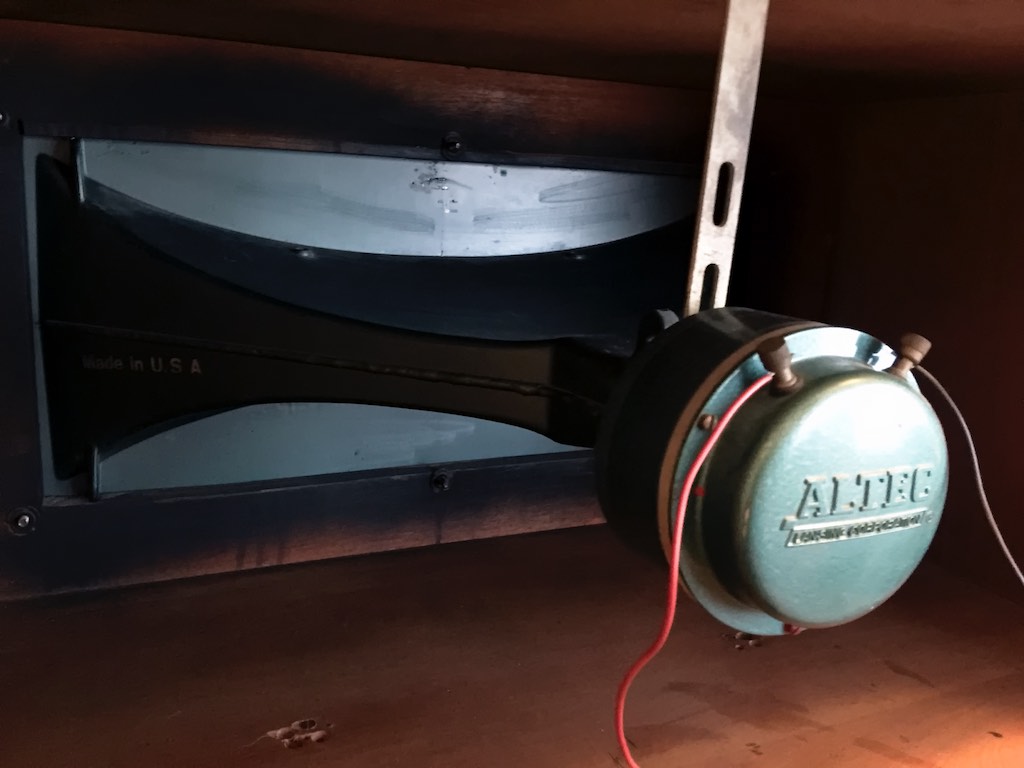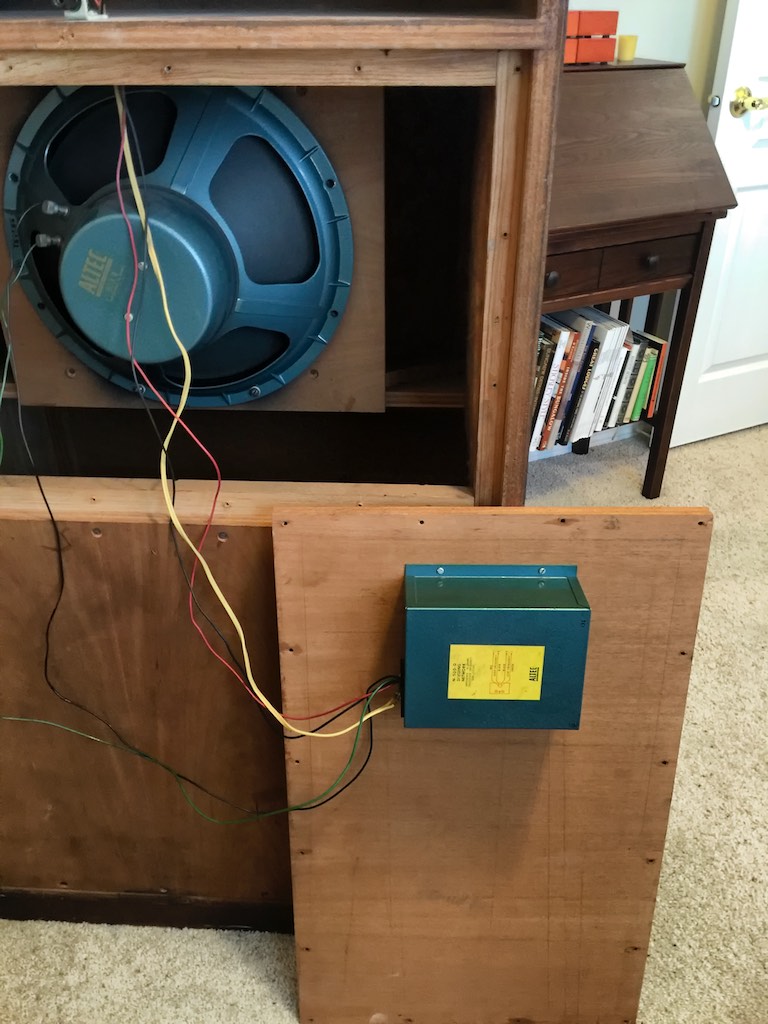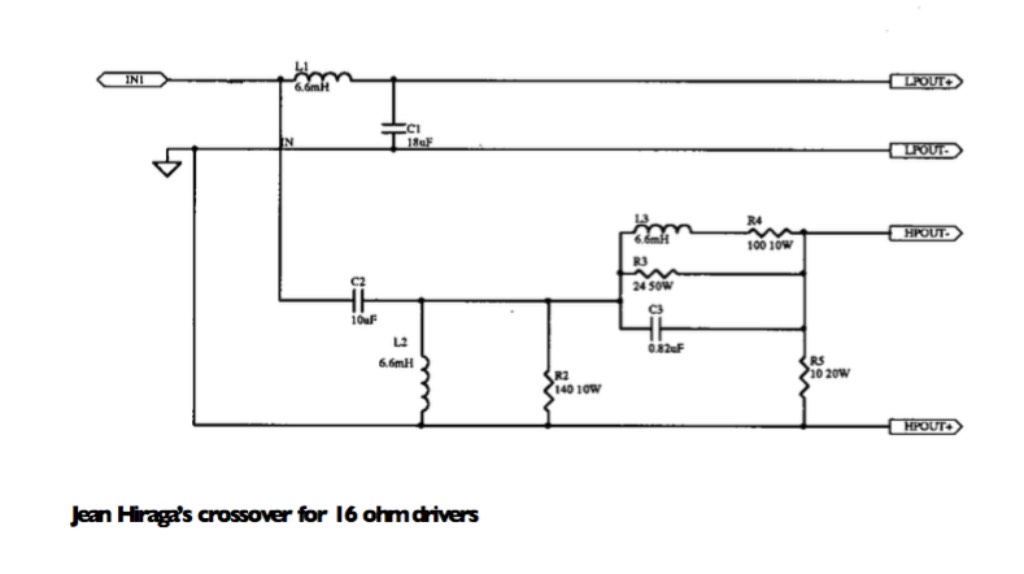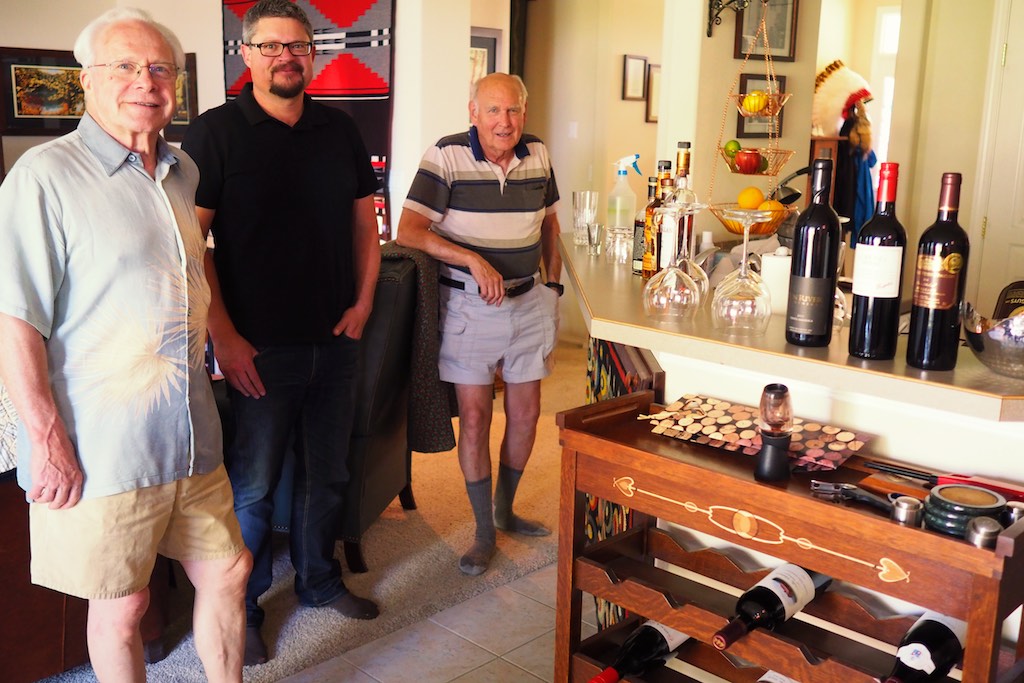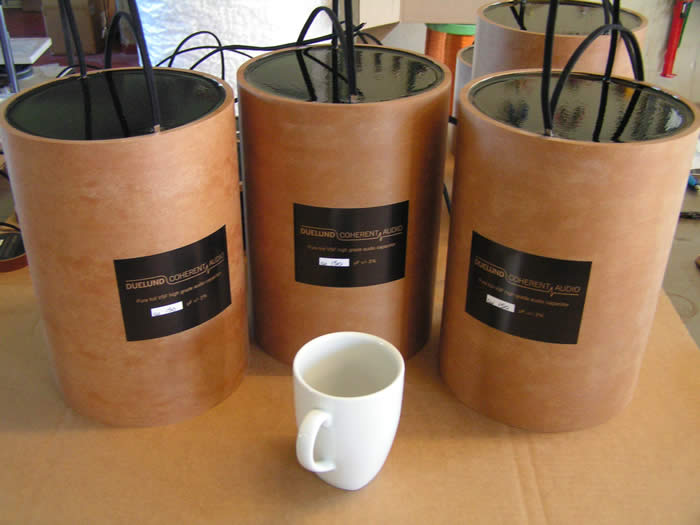I am absolutely thrilled to be able to announce the Duelund Coherent Audio - Stokowski Altec Project for 2018!
This exciting project will showcase the Duelund Coherent Audio tinned-copper components, and will be a world first for a crossover constructed of tinned-copper components.
As you know, I have been extremely impressed with the prototype tinned-copper capacitors and resistors Frederik Carøe has sent to me to try, and the thought of building an entire crossover with Duelund tinned-copper components makes me positively giddy!
Frederik is as excited as I am about the project, and says he's really looking forward to making some tinned-copper inductors too, which will also be a world's first!
Let me refresh you about the history of my vintage Altec Voice of the Theatre loudspeakers that were once owned by the great conductor, Leopold Stokowski.
On November 11, 2015, my friend Ron and I embarked on an audio adventure that took us to the Emerald City of Seattle to look at and listen to a pair of vintage Altec Lansing Voice of the Theatre loudspeakers that were custom built for Leopold Stokowski (April 18, 1882 – September 13, 1977), while he lived in New York and was conducting the American Symphony Orchestra.
Upon arriving in Seattle, Ron and I met with a very nice gentleman and his wife, Jeff and Lynn, who had advertised their Altec Voice of the Theatre loudspeakers with the interesting history, as being for sale.
Jeff told us, “I bought these speakers in New York 40 years ago from a colleague of Leopold Stokowski’s at the American Symphony Orchestra. He told me that Stokowski gave them to him before he left New York permanently for London. He was a conducting student of Stokowski’s.”
After a brief listen I bought those historic Stokowski Altec's, and Ron and I brought the big & heavy loudspeakers back to my place, where I've been very happily listening to them with the SPEC RSA-M3 EX Real Sound Amplifier from Yazaki-san.
A little more information about Leopold Stokowski:
Leopold Stokowski had moved from London to New York City in 1905. In addition to his conducting, Stokowski was very interested in the recording and reproduction of music, and experimented with it as early as 1933 with his assistant conductor, Alexander Smallens, using a 3-microphone placement, that Bob Fine would later perfect.
Stokowski became a member of the Audio Engineering Society, collaborated with Altec, and played music from recording sessions back over Altec Lansing Voice Of The Theatre loudspeakers, driven by low powered vacuum tube amplifiers.
Altec built the great conductor a pair of full-sized Altec Voice of the Theatre loudspeakers enclosed in large custom "evening dress" cabinets for listening to music at home in his New York Fifth Avenue apartment (above).
After a long career conducting in America, at age 90, Leopold Stokowski moved back to London in May of 1972 in order to further his recording career, and his Altec's ended up in Jeff & Lynn's hands, and eventually worked their way into my life!
I am thrilled to have the Stokowski Altec's, first because I love Altec Voice of the Theatre loudspeakers in general, and secondly because this pair of Altec's has such historic significance - that's so cool!
So what makes up these custom Voice of the Theatre loudspeakers that Altec made for the great Maestro?
The most obvious thing about the Stokowski Altec's are that they are enclosed in huge custom wood cabinets, with burgundy grill cloth.
They’re built very solidly and professionally, and everything has been fitted perfectly together. These are vintage loudspeakers, and they’re quite old now, and their cabinets have accumulated a few scuffs and scrapes over the years, but still they were in very nice condition.
The bass-horn cabinets inside the external cabinet enclosures look similar to the 825, are very well made as well, and house some pristine Altec 803B low frequency drivers.
The 803B low frequency driver is described in the Altec literature as, "The Altec 803B is a 15-inch low frequency loudspeaker of professional quality, chosen to complement the finest broadcast and recording studio monitor systems (such as the A7 and A7-500) in addition to providing the critical listener with superb bass reproduction for all wide-range public address, sound reinforcement and theatre or auditorium systems."
"Utilizing heavy Alnico V permanent magnets (2.4 lbs.), rugged, die-cast frames, edge-wound copper ribbon voice coils of the largest practical diameter (3"), and exceptionally compliant cone suspension, these LF transducers combine the advantages of long-term operation with unparalleled response throughout the entire audible bass frequency range (20-1,600 cycles)."
The Altec 803B low frequency driver has a continuous power rating of 30W, a frequency response of 20-1,600Hz, a sensitivity of 99dB (SPL at 4" from 1W), and 114dB (SPL at 4" from 30W).
The Altec 803 low frequency driver has an impedance of 16 Ohms, the cone resonance is 25 Hz, the Alnico V magnet flux density is 12,000 Gauss, the frame (basket) is structurally-reinforced cast aluminum, the cone is molded fiber, the cone suspension is a high-compliance cloth surround with mechanical resistance, the voice coil is edge-wound copper ribbon, the diameter is 15 1/8 inches (7" deep), and the weight is 17.5 pounds.
Up top are Altec 804A 16-Ohm compression drivers mated to Altec 511-B horns.
The Altec 804A and Altec 802D compression drivers are essentially the same design, and are shown together in Altec literature.
The Altec 804A / 802D both use large diameter (1.75") aluminum ribbon edge-wound voice coils coupled to a large (2.25") aluminum diaphragm having tangential compliance. Both have a mechanical phasing plug with two exponential acoustic slots, which provides the proper phase relationship from sound emanating from the center & outer edges of the diaphragm and voice coil assembly, to give maximum high-frequency reproduction and a smooth overall response.
Like the 803B low frequency drivers, both the Altec 804A / 802D are rated for 30W. The Altec 804A / 802D frequency response is 500Hz to 22,000Hz, voice coil diameter is 1.75", impedance is 16 Ohms, and diameter is 4.5".
The primary difference is their magnets, as the 802D uses a 1.2 lbs., 15,250 Gauss magnet, and the 804A uses a 13 oz. 13,000 Gauss magnet, which reflects their intended use as compression drivers for sound reinforcement in large spaces with high ambient noise levels (802D), or smaller spaces, like home listening rooms or smaller recording studios with moderate ambient noise levels (804A).
The Altec 804A compression driver is optimized for loudspeakers, "... located in non-reverberant space having moderate ambient noise levels, the Altec 804A driver proves a perfect match (Such conditions would be analogous to the average listening room or smaller broadcast and recording studio)", and pressure sensitivity is rated at 109.5dB at 1W and 124.2dB at 30W.
The Altec 511B sectoral horn is intended to be crossed over at 500Hz.
Full back view of the drivers and sectoral 511B horn.
Here’s the N-500-D crossover network …
As I mentioned earlier, Leopold Stokowski was a member of the Audio Engineering Society, collaborated with Altec, and played music from recording sessions back over Altec Lansing Voice Of The Theatre loudspeakers, driven by low powered vacuum tube amplifiers.
Presumably, the audio engineers at Altec optimized the component choices & cabinet construction for this custom pair of Altec loudspeakers to best match Leopold Stokowski's personal playback tastes.
I'll leave the N-500-D crossovers in place but disconnected, to preserve the historical configuration of the loudspeakers, and the Altec N-500-D crossovers will replaced with the Duelund Coherent Audio tinned-copper crossovers that are the subject of this project - exciting stuff!
The Duelund crossovers will be based on the Hiraga 16 Ohm crossover design (above) and will consist of the following parts, and of course Duelund DCA tinned-copper wiring:
C1: 2 x 18uF
C2: 2 x 10uF
C3: 2 x 0.82uF
R2: 2 x 140 Ohm 10W
R3: 2 x 24 Ohm 50W
R4: 2 x 100 Ohm 10W
R5: 2 x 10 Ohm 20W
L1: 2 x 6.6mH
L2: 2 x 6.6mH
L3: 2 x 6.6mH
We'll use an L-pad on the HF output to help dial in the balance between the low and high frequency drivers.
Time for a story.
Pete Riggle had stopped by for some audio fun & games right after I got the Stokowski Altec's and listened to them with the SPEC M3 amplifier streaming jazz from Jazz24 in Seattle.
Pete liked what he heard so much from my Altec's he went home and bought a pair of Altec A7's, and has been having a ball experimenting with them, and they sound really, really, good in Pete's Garden of Earthly Delights listening room (above).
In fact, Pete's superb results with his A7's are what inspired me to do the crossover project for my Stokowski Altec's.
The Altec's are capable of an incredibly high-level of performance if you take time to get them dialed in right with some good crossovers.
In the spirit of the Duelund-WRSE Project, Frederik and I are embarking on the exciting Duelund-Stokowski Altec Project!
Frederik said he would be starting on building up the tinned-copper components for this project in the next couple of weeks, which I'm really excited about.
I would like to thank Frederik Carøe for his support of the Duelund-Stokowski Altec Project, as I quite literally couldn't do it without him. A huge thank you to Frederik!
Well, 2018 is entering in like a lion, roaring with excitement, and kicking off the new year (and my retirement!) with the Duelund-Stokowski Altec Project is a dream come true!
Stay tuned, I'll be reporting every step of the way about this exciting project, and as always, thanks for stopping by, and may the tone be with you!





